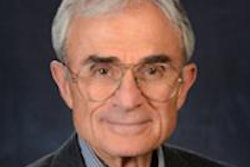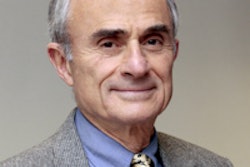Medicare payments for noninvasive diagnostic imaging exams are down 21% compared with their peak in 2006, reports a new study in the September issue of the Journal of the American College of Radiology. But are federal policymakers paying attention?
Because of the rapid growth of imaging use before 2006, Medicare payments for imaging procedures have been under intense scrutiny, according to lead author Dr. David C. Levin, of Thomas Jefferson University, and colleagues. Techniques to reduce this growth have worked, and it's time to stop the push to reduce payments for imaging, Levin told AuntMinnie.com.
"Whatever goal policymakers had in 2006 [to reduce imaging overuse], it's been accomplished," he said. "We don't need any further cuts in reimbursement."
Levin's group used Medicare Part B databases for 2000 to 2010 for the study, including all codes for noninvasive diagnostic imaging procedures and using physician specialty codes to identify radiologists, cardiologists, all other nonradiologist physicians as a group, and independent diagnostic testing facilities (IDTFs). The team also tracked Part B noninvasive diagnostic imaging payment trends (JACR, September 2012, Vol. 9:9, pp. 643-647).
Noninvasive diagnostic imaging spending skyrocketed between 2000 and 2006, rising from $5.9 billion to $11.9 billion. But after the Deficit Reduction Act (DRA) of 2005 went into effect in 2007 there was a sharp drop, followed by a slight rise in 2008 and then successive smaller drops the next two years, reaching $9.4 billion in 2010 (21% decrease compared to 2006), according to the authors.
Payments to radiologists totaled $2.9 billion in 2000, rose to a peak of $5.3 billion in 2006, and then dropped to $4.7 billion in 2010. Payments to cardiologists for noninvasive diagnostic imaging services were $1.3 billion in 2000, peaked at $2.9 billion in 2006, and dropped to $1.9 billion in 2010. Payments to other physicians were $1.1 billion in 2000, peaked at $2.3 billion in 2006, and dropped to $1.9 billion in 2010. Similar trends occurred in independent diagnostic testing facilities, according to Levin and colleagues.
"The most important finding of this study is that after a number of years of rapid growth in [noninvasive diagnostic imaging] costs to Medicare, which reached a peak in 2006, there was a 21% decrease from that year through 2010," the team wrote.
In addition, four other developments at the federal level have negatively affected imaging reimbursement to physicians in recent years, according to the authors:
- The multiple procedure payment reduction (MPPR), which applies a 25% reduction to the technical component of the second and any additional CT, MRI, and ultrasound examinations of contiguous body parts during the same session
- The decision by the U.S. Centers for Medicare and Medicaid Services (CMS) to revalue the practice expense component of imaging relative value units (RVUs), which reduced the imaging practice expense per hour from $204 to $135; this is being phased in over a four-year period that began in 2010 and will end in 2013
- An increase in the assumed equipment utilization rate; the Patient Protection and Affordable Care Act called for this rate to increase to 75% for all diagnostic imaging equipment costing less than $1 million (and the current administration's 2013 budget calls for the assumed utilization rate to be increased again to 95%)
- The bundling of certain high-volume CPT codes
A wake-up call
How does this type of study data inform the daily practice of radiology? It's a wake-up call, Levin said. "Radiologists have to recognize that the days of continuous growth in personal income have ended."
Unfortunately, it's unclear whether the message is getting through to policymakers, according to Levin.
"We're getting through to the physician community -- radiologists certainly have become aware of [the data] and use it when they pursue their lobbying efforts," he told AuntMinnie.com. "But whether what we're showing is affecting policymakers' decisions is harder to say."
The study data demonstrate that imaging costs in the Medicare program have not only been substantially reduced in recent years thanks to the DRA, the effects of the four additional factors will be even greater as they become fully implemented in the coming years, Levin and colleagues wrote. There are better ways to control imaging utilization and costs without further cutting reimbursement, such as meaningful tort reform and a more proactive approach by CMS and Congress to address physician self-referral such as repealing the in-office ancillary services exception to the Stark laws.
These tactics, however, can be political minefields, Levin said.
"If policymakers want to make a valuable dent in imaging use, they should go after self-referral," he told AuntMinnie.com. "But the feds have shied away from this. They don't want to go after it because they're afraid of alienating orthopods, neurosurgeons, and cardiologists -- all of whom have powerful lobbies."
In any case, change will be slow, according to Levin.
"One of the things I've learned over the years is that there aren't going to be any sudden, dramatic changes," he said. "You have to keep hammering away to show [policymakers] what is actually happening."




















